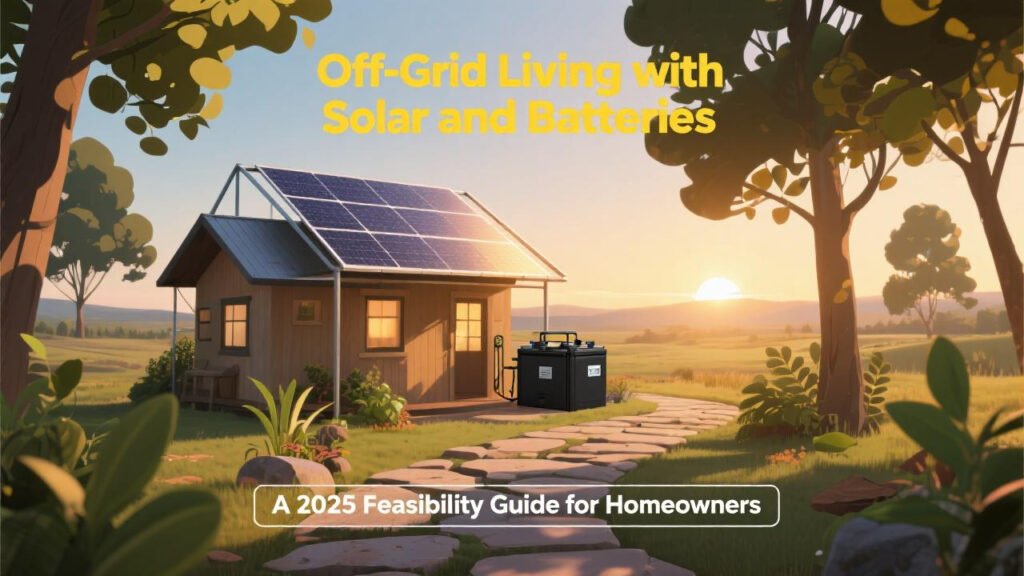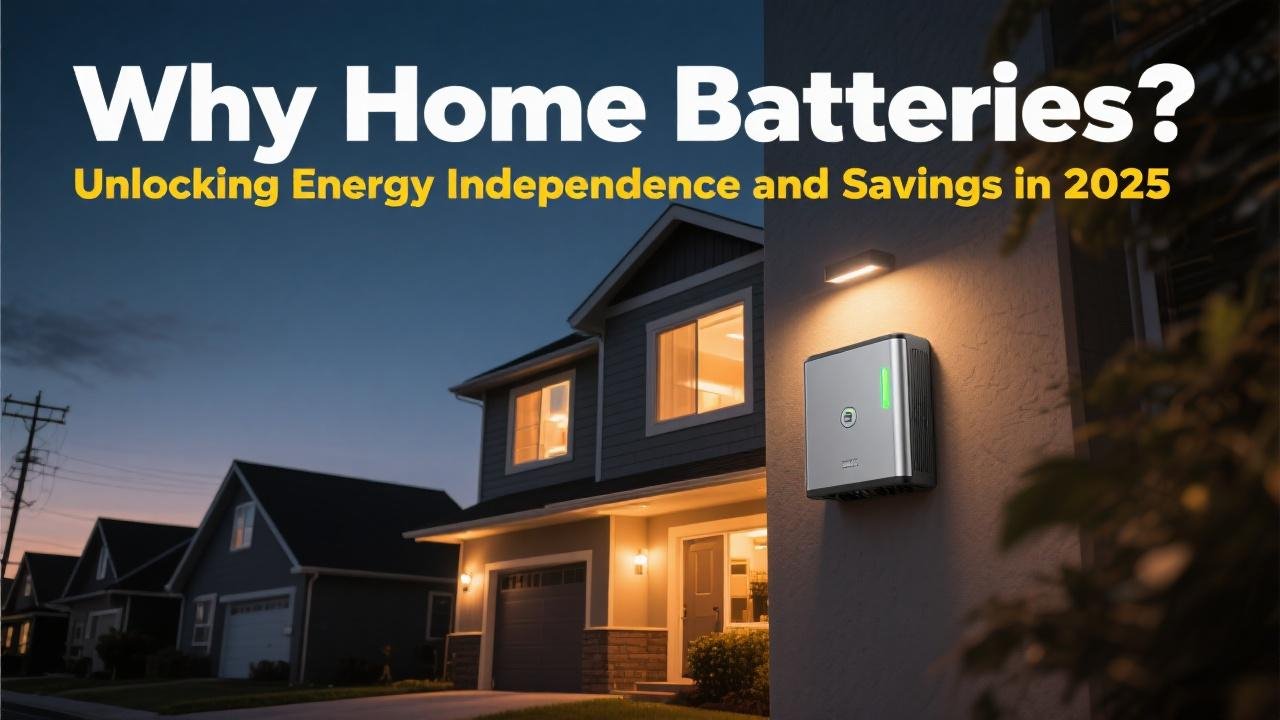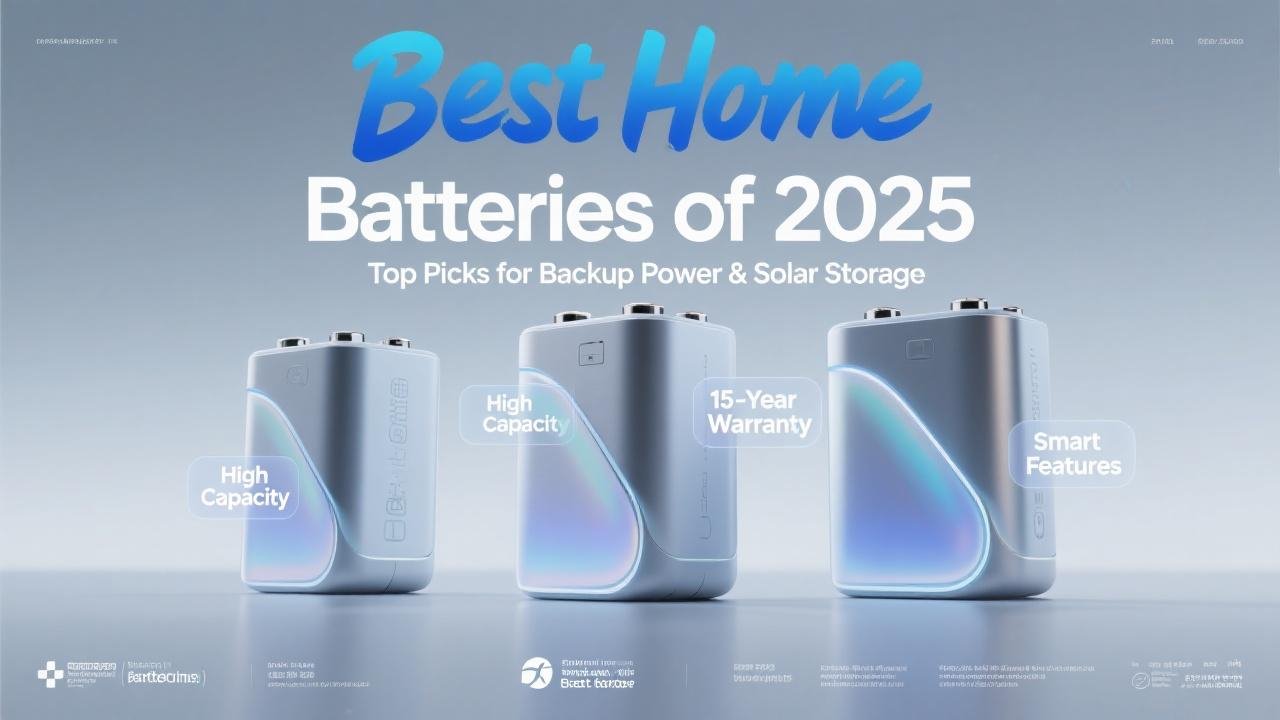Introduction: Embracing True Energy Autonomy in 2025
The allure of off-grid living – complete independence from public utilities, a minimal environmental footprint, and self-sufficient power – captivates many homeowners. In 2025, advancements in solar panel efficiency and home battery storage technology have made this dream more attainable than ever. However, transitioning to a fully off-grid lifestyle powered by solar and batteries is a significant undertaking that requires meticulous planning, a deep understanding of your energy needs, and a robust system design.
This guide will explore the key components, considerations, and feasibility of an off-grid solar and battery system for your home in 2025. While platforms like EnergySage primarily focus on grid-tied solutions, understanding off-grid principles can inform even those seeking maximum grid independence.
What Does “Off-Grid” Truly Mean?
Living off-grid means your home is not connected to the public electricity grid. All the power your home consumes must be generated and stored on-site. For most modern off-grid homes, this involves a combination of:
- Solar Photovoltaic (PV) Panels: To generate electricity from sunlight.
- Battery Storage System: To store excess solar energy for use at night, during cloudy weather, or periods of high demand.
- Backup Generator (Optional but Recommended): For extended periods of low solar generation (e.g., several consecutive cloudy days) or unusually high demand, a backup generator (propane, diesel, or gasoline) can provide essential power and recharge batteries.
- Charge Controller and Inverter(s): To manage the flow of energy from panels to batteries and convert DC power to usable AC power for your home.
Unlike grid-tied systems that can draw power from the utility when solar production is insufficient, off-grid systems must be entirely self-reliant.

Key Components of an Off-Grid Solar and Battery System:
Solar Panel Array:
- Sizing is Critical: Your solar array must be large enough to meet your average daily energy needs AND generate enough surplus to fully charge your batteries regularly, even during less sunny months. Oversizing the array compared to a grid-tied system is common.
- Efficiency and Durability: Choose high-quality, efficient, and durable panels designed to withstand various weather conditions.
Battery Bank:
- Capacity (kWh): This is the heart of your off-grid system. The battery bank must be large enough to power your home through nights and several days of autonomy (days without significant solar input). Calculating this involves assessing your daily kWh usage and desired days of backup.
- Chemistry (LFP vs. NMC): For off-grid systems where reliability and longevity are paramount, Lithium Iron Phosphate (LFP) batteries are often favored due to their long cycle life and safety.
- Depth of Discharge (DoD) and Cycle Life: Choose batteries with a high DoD and a long cycle life to maximize usable energy and lifespan.
- Battery Management System (BMS): Essential for protecting the battery bank from overcharging, over-discharging, and extreme temperatures.
Solar Charge Controller:
- Function: Regulates the power from the solar panels to prevent overcharging the batteries, optimizing the charging process and extending battery life. MPPT (Maximum Power Point Tracking) charge controllers are more efficient than PWM (Pulse Width Modulation) types.
Inverter(s):
- Off-Grid Inverter or Hybrid Inverter: You’ll need an inverter specifically designed for off-grid use or a hybrid inverter that can manage solar, batteries, and potentially a generator. These inverters must be capable of creating their own stable AC waveform (as there’s no grid signal to sync with) and handling the full load of your home.
- Power Output (kW): The inverter must have sufficient continuous and surge power capacity to run all your necessary appliances simultaneously.
Backup Generator (Recommended):
- Purpose: Provides power during extended periods of low solar generation (e.g., long cloudy spells in winter) or when battery levels are critically low. It can also be used to perform “equalization charges” for some battery types (less common with lithium-ion).
- Fuel Type: Propane is often preferred for its storability and cleaner burn compared to gasoline or diesel.
System Monitoring:
- Crucial for tracking energy production, consumption, battery state of charge, and identifying any system issues.

Feasibility and Considerations for Off-Grid Living in 2025:
Transitioning to an off-grid solar and battery system is a complex decision with several factors to weigh:
- Energy Audit and Conservation:
- Minimize Your Load: The first and most crucial step is to drastically reduce your energy consumption. Conduct a thorough energy audit of your home and implement aggressive energy efficiency measures. This includes super-insulation, high-efficiency windows, LED lighting, ENERGY STAR appliances, and mindful energy use habits. The smaller your energy footprint, the smaller (and less expensive) your off-grid system needs to be.
- Accurate Load Calculation:
- Precisely calculate your daily and seasonal energy needs (kWh). List every appliance, its wattage, and how many hours per day it’s used. This is far more critical for off-grid than grid-tied systems.
- System Sizing – No Room for Error:
- Unlike grid-tied systems where under-sizing simply means drawing more from the utility, under-sizing an off-grid system means running out of power. Work with experienced off-grid system designers to ensure your solar array and battery bank are adequately sized for your load, location (peak sun hours), and desired days of autonomy.
- High Upfront Costs:
- Off-grid systems are generally more expensive than grid-tied systems of similar household support capability due to the need for larger solar arrays, significantly larger battery banks, and potentially more robust inverters and charge controllers. While battery prices are declining , a substantial battery bank is a major investment.
- Lifestyle Adjustments:
- Living off-grid often requires a greater awareness of energy consumption. You might need to adjust when you use high-power appliances based on solar availability or battery state of charge.
- Maintenance and Technical Understanding:
- While modern systems are becoming more user-friendly, off-grid homeowners often benefit from a basic understanding of their system’s operation and maintenance requirements. Regular checks of battery connections, fluid levels (for some older battery types), and generator maintenance may be needed.
- Location and Climate:
- Your geographic location, local climate (sunshine hours, typical cloud cover, temperature extremes), and site-specific shading will heavily influence system design and feasibility.
- Permitting and Regulations:
- Even for off-grid systems, local permits for electrical work and building codes will likely apply.
Is Off-Grid Solar and Battery Right for You?
Off-grid living offers unparalleled independence but demands commitment. It’s best suited for:
- Remote Locations: Where grid connection is prohibitively expensive or unavailable.
- Dedicated Environmentalists: Those seeking the smallest possible ecological footprint.
- Resilience Seekers: Individuals prioritizing self-sufficiency and uninterrupted power regardless of grid status.
- Those Willing to Invest and Adapt: Homeowners prepared for the higher upfront costs and potential lifestyle adjustments.
The Ultimate Form of Energy Empowerment
Achieving a fully off-grid lifestyle with solar and batteries in 2025 is a testament to the power of renewable energy technology and a commitment to self-sufficiency. It requires careful planning, significant investment, and a conscious approach to energy consumption. The advancements in LFP battery safety and longevity, coupled with more efficient solar panels, make it a more viable option than ever before.
However, it’s not a decision to be taken lightly. Thorough research, professional design consultation from off-grid specialists, and a realistic assessment of your energy needs and lifestyle are paramount. While platforms like EnergySage focus on grid-connected solutions, the principles of understanding energy use, evaluating technology, and seeking expert advice are universal in the journey toward a more sustainable energy future.



